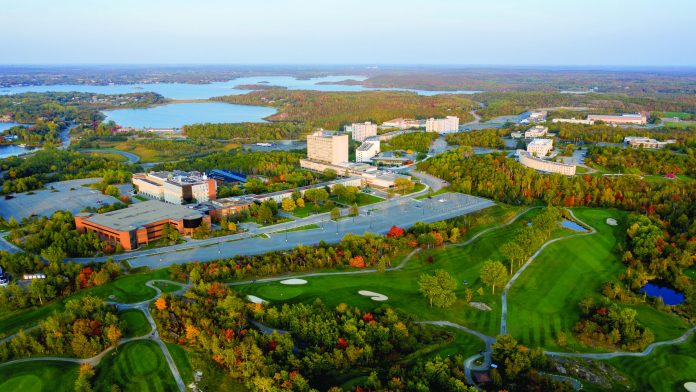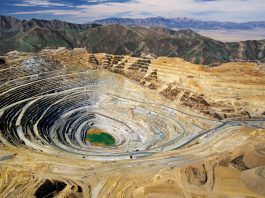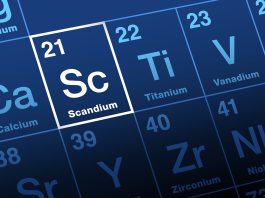How Canada’s Mineral Exploration Research Centre, a geoscience research and education hub at Laurentian University, is improving exploration targeting, providing data, and supporting talent development.
Canada’s mineral sector is critical to supplying global demands for raw materials that form the foundation of our manufacturing, technology, agricultural, and commercial sectors. From fertiliser and forks to fibre optics and the latest smartphones and low-carbon technologies, almost anything we use or consume relies on a mining supply chain that begins with minerals.
Mineral exploration involves identifying concentrations of minerals in the Earth’s crust, where they can be extracted to meet market demands. One of the largest countries in the world, Canada is also one of the most mineral-rich. It produces 60 minerals and metals, is the top global supplier of potash (used in agriculture and other industries) and ranks among the top five producers of cobalt, diamonds, fluorspar, gemstones, gold, indium, niobium, palladium, platinum, tellurium, titanium concentrate, and uranium. Since 2021, Canada’s most valuable mineral products have been gold, coal, iron ore, potash, and copper. As demand for minerals and metals to support the battery electric vehicle industry grows, exploration interest and investment in cobalt, graphite, lithium, and nickel is increasing and is expected to continue.
The Mineral Exploration Research Centre (MERC) at the Harquail School of Earth Sciences
The Mineral Exploration Research Centre, or MERC, is one of the world’s leading mineral economic geology research centres. It aims to advance the fundamental science needed to discover the next generation of orebodies.
Dr Ross Sherlock leads MERC as its Director. He keeps the Centre and its scientists and students focused on collaborative academic, government, and industry research projects across Canada and worldwide. These projects support the development of new exploration methods and technologies, including artificial intelligence and digital environments, to ensure the research reflects industry best practices and addresses changing needs while training highly qualified personnel for careers in the minerals industry, academia, and government.
MERC facilitates and manages research projects, typically field-based and exploration-related, taking these findings to the next level through data compilation, processing, and interpretation. Its most significant current project is Metal Earth, a $104m global applied R&D effort primarily supported by the Canada First Research Excellence Fund. This initiative supports a strategic consortium of outstanding researchers from academia and allied Canadian and international research centres, government, and industry. In addition to Metal Earth, MERC continues to manage and deliver other research projects with industry and academic partners.
The Mineral Exploration Research Centre is part of the Harquail School of Earth Sciences research arm at Laurentian University in Sudbury, Ontario. Home to one of the deepest mines in the world,² Sudbury has a rich history in mineral exploration and mining. One of Sudbury’s major landmarks is the Big Nickel, a replica coin three storeys high, commemorating the City’s relationship to the shiny metal. Nickel is just one of the valuable commodities mined in Sudbury, and visitors to the landmark can learn all about it at Dynamic Earth. This renowned science centre provides immersive, hands-on experiences to educate the public about mining and Earth’s mineral resources.
The Laurentian campus in Sudbury is located on the edge of the world’s second-largest meteor impact craters, which has left behind accessible ore deposits and a stunning natural topography, including more than 330 lakes and many rivers. The university is located on the traditional lands of the Atikameksheng Anishnawbek, and the City of Greater Sudbury includes the traditional lands of the Wahnapitae First Nation. Laurentian is a bilingual (French and English) and tricultural (English, French, and Indigenous) university, attracting diverse students and faculty. The university has 113 undergraduate, graduate and post-doctoral programmes.³ Graduates may work across the mining and minerals sector, which requires a broad range of professionals with education in fields including engineering, geoscience, health, finance, law, human resources, Indigenous and community relations, and environmental and social governance and sustainability.
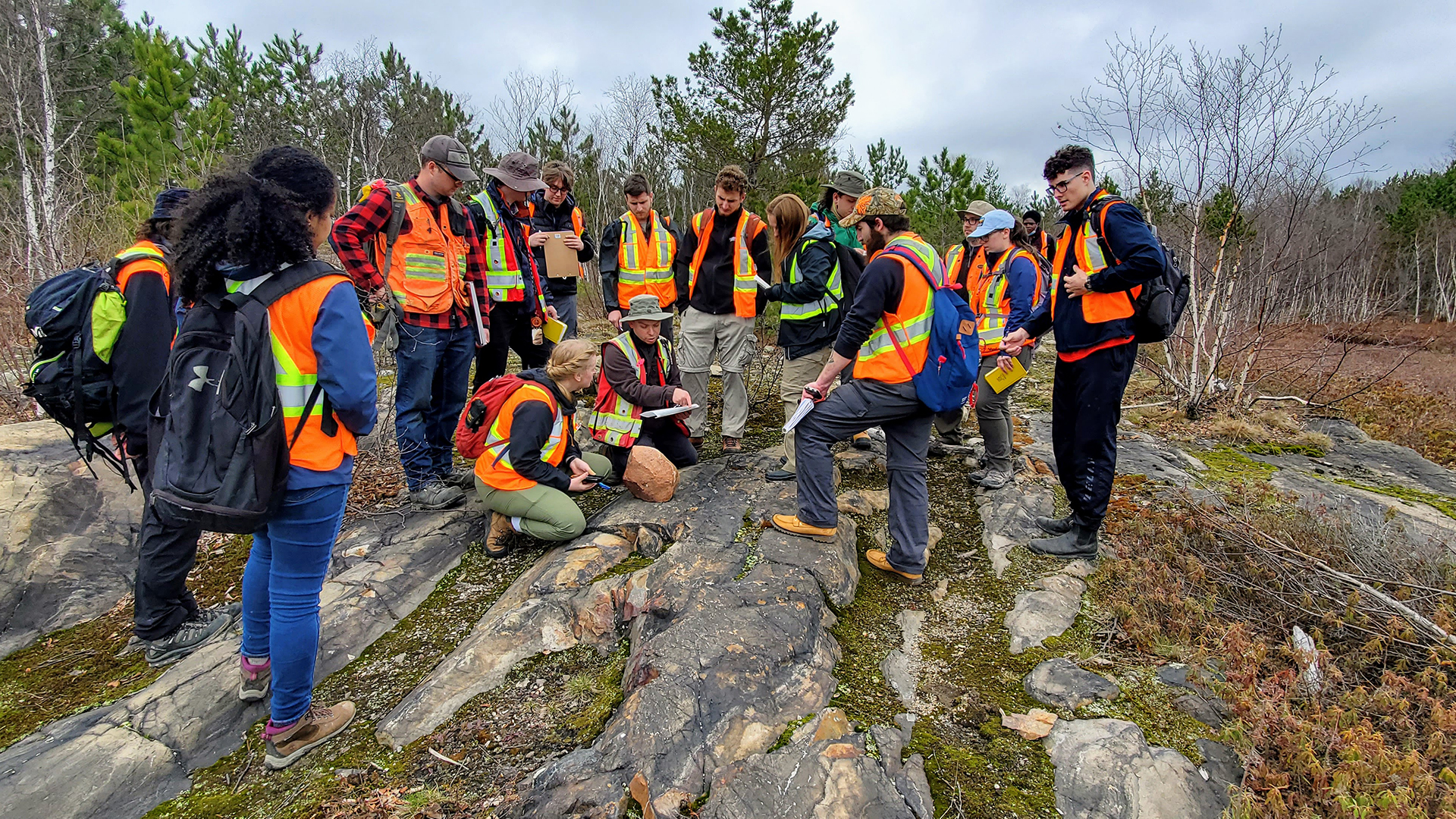
Laurentian’s Harquail School of Earth Sciences is focused on geoscience research and education, which are crucial for advancing the mining and minerals industry, the professionals who will shape it, and the society that will benefit from it.

The need to recruit young people into this field is critical. In a 2023 infographic, the Mining Industry Human Resources Council outlined the issue: “Canada’s mining industry faces a tight, and tightening, labour market. With critical minerals and metals needed to transition to a clean economy, today’s mining labour shortages threaten the world we want to create tomorrow.” Despite rewarding opportunities supporting the advancement of low-carbon technology and infrastructure, as well as opportunities to develop skills with high-tech machinery and contribute to environment-saving initiatives, mining is not a top career choice with today’s youth.4
The Harquail School of Earth Sciences offers academic and research opportunities for students, professors, and researchers in Canada and worldwide. Students choose from a range of programmes and courses, including:
• BSc in Earth Sciences
• MSc Geology (thesis) and MSc Geology – Applied Mineral Exploration (course-based)
• PhD in Mineral Deposits and Precambrian Geology
• Modular Courses for registered geoscientists, graduate students, and industry professionals
MERC also delivers Short Courses at global conferences, which provide geologists and graduate students with opportunities to stay updated on the latest developments in mineral exploration targeting, new data, and research outputs.
MERC at the Harquail School of Earth Sciences offers an integrated approach to undergraduate and graduate studies through applied research, education and HQP training that is designed to:
• Solve challenges related to mining and mineral exploration
• Fill knowledge gaps and promote the advancement of geological and exploration education, and
• Supply the sector with a qualified workforce.
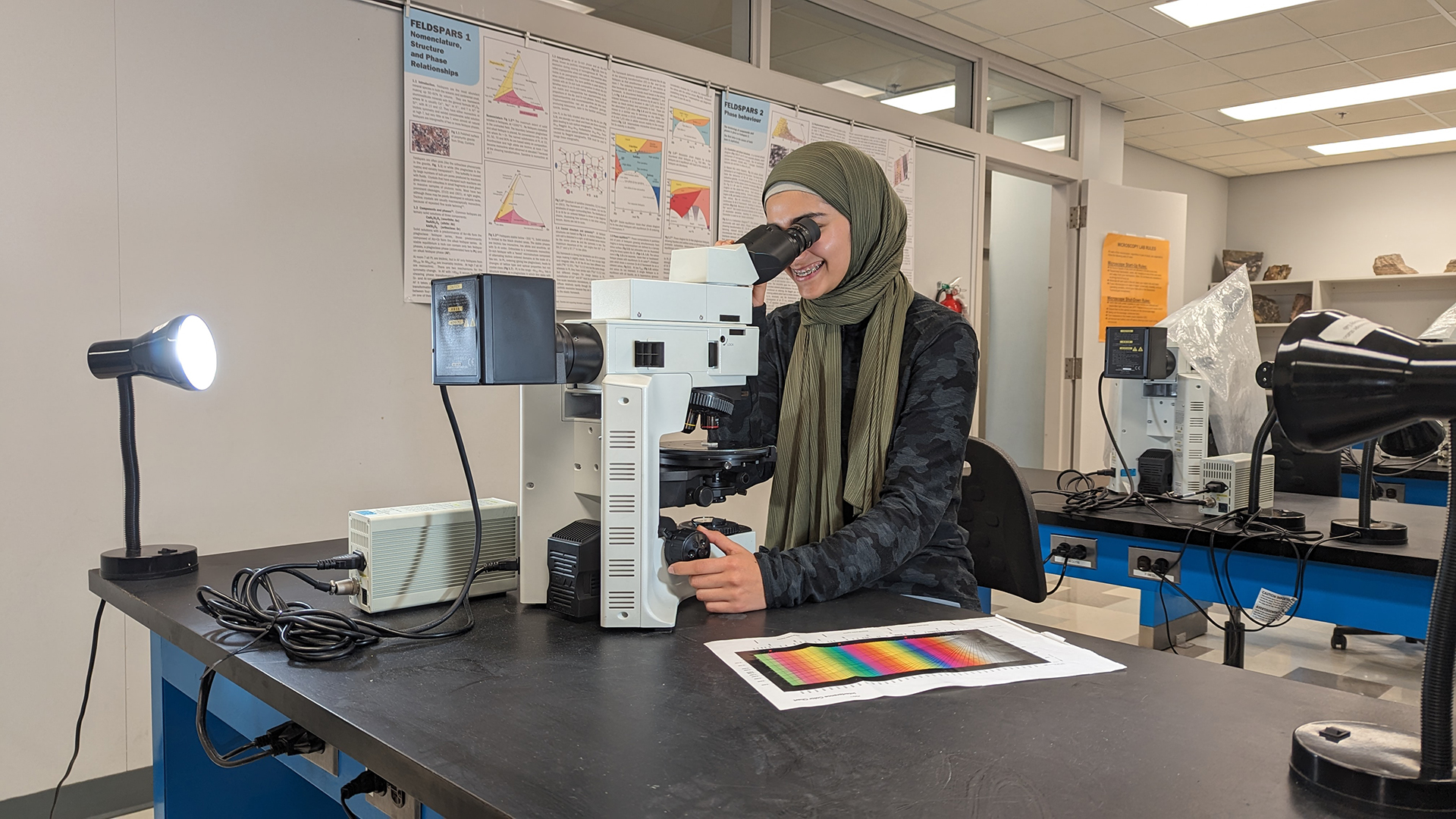
The Metal Earth project: Advancing Canada on the world stage
Now in its eighth year, the Metal Earth project has contributed significantly to ore deposit research in Canada and globally. Some of the most valuable outcomes are groundbreaking research publications,
the advancement and training of highly qualified personnel, and public data and methods of interpreting that data.
Metal Earth core goals and objectives
1. Fundamental Science
• Transform our understanding of Earth’s early evolution and processes that govern differential metal endowment.
• Improve the science for targeting and finding new orebodies.
2. Applied Innovation and Commercialisation
• Cement Canada’s position as a global leader in mineral exploration research through open-source delivery of new knowledge and the development of transformative technologies targeted at increasing exploration success.
• Improve training of quality young geoscientists for the mineral industry.
Scientists and industry leaders gather several times a year to review Metal Earth results and discuss how to apply the findings. Hundreds of papers, theses, government reports, presentations, abstracts, and datasets have been completed. This work has prompted lively debates and triggered thoughtful and innovative ways to advance geoscience and mineral prospectivity mapping, which involves various techniques to model or interpret the geology of the Earth’s crust from an ore deposit perspective.
There are several places where this information is made available to the public for scientific and industrial use. MERC produces an Annual Report that includes the latest research updates and plans for every project. The most significant Metal Earth peer-reviewed journal articles are open-access, and others are available through contacting the researcher. There are also two other places to locate the latest Metal Earth data and information: The Metal Earth Hub and the MERC website’s data repository. As the project matures, additional resources will be added to better catalogue all of the Metal Earth products.
The Metal Earth Hub features interactive web maps detailing sampling locations, collected field data, and analysis for all framework geoscience products developed by Metal Earth.
These new tools display:
• Data collected at sample locations
• Gravity and magnetotelluric source data files
• Geochemical analysis in spreadsheet format
• Instructions to download complete seismic datasets.
The Hub and MERC website also host links to open access papers, government reports, theses, and other documents from early in the project.
In an interview in Global Business Reports, Metal Earth Director Ross Sherlock stated that today’s challenge: “Is compiling and integrating the datasets collected by the various projects. MERC has partnered with five other universities to deliver Metal Earth, and each of our partners has contributed according to their expertise. The challenge now lies in combining and integrating these data to quantify what geologic processes control metal endowment and how to use this to be predictive when exploring for metals.” ⁵
Building expertise in the years ahead
Sherlock contributes his expertise and learns from others around the world by serving on various Boards and Committees in academia and industry. Recently, Ross joined the Advisory Board of Sweden’s Smart Exploration Centre, a new multidisciplinary research Centre that’s advancing knowledge and innovation for the exploration and development of critical raw materials in the EU. Like MERC, this Centre creates international interdisciplinary partnerships to solve complex geoscience questions. MERC also benefits from industry expertise from its own Board and support from its members, who offer feedback on its direction and sustainability. They echo the concern shared in the Mining Industry Human Resources Council studies, which state that shortages of skilled personnel might constrain economic growth opportunities and restrict mineral exploration projects in Canada. The need to bring youth into geoscience is critical. MERC is a part of the solution, recruiting students from Canada and abroad and facilitating geoscientists to pursue professional development through its graduate research projects.
At Laurentian University, the Harquail School of Earth Sciences is increasing its faculty complement. Dr Stefanie Brueckner will join the School this summer, coming from the University of Manitoba with a focus in economic geology and critical minerals. Graduate students continue to be attracted to new projects working on ore deposits in Canada and globally. Further, the Harquail School engages with more than 1,000 people each year in its outreach efforts to recruit undergraduate students to the field of Earth Sciences through initiatives ranging from summer geoscience tour activities to high school classroom visits.
The greatest ambassadors are graduates and students in the programme who work in geosciences and use its opportunities to develop themselves and their talents professionally. Some students are passionate about mineral exploration and being outdoors in the field, others about volcanism, plate tectonics, geochemistry, or geophysics, and still others are fascinated by techniques involving data and building computer models. It is a field where having curiosity and skill sets in different disciplines is welcome and rewarding.
In addition to its contributions to the development of highly qualified personnel, the Metal Earth project has also left a lasting legacy of open-access data and publications that can be used by researchers and industry geologists worldwide. It demonstrates that MERC is a Centre with worldwide connections and influence and a track record of success in directing and managing some of the world’s most significant collaborative geoscience research initiatives.
Laboratory Services
The Mineral Exploration Research Centre – Isotope Geochemistry Laboratory (MERC-IGL) at Laurentian University’s Harquail School of Earth Sciences specializes in in-situ analyses of rock and mineral specimens.
The MERC-IGL is equipped with a scanning electron microscope (SEM) and a high-resolution (15 μm) micro-x-ray fluorescence spectrometer (μXRF), an ArF excimer laser ablation (LA) system paired with two inductively coupled plasma mass spectrometers (ICPMS), a multi-collector (MC), and a triple quad (TQ) that combine to offer a range of analytical applications that can be optimised for specific research objectives.
Capabilities:
• Backscattered Electron (BSE) and secondary electron (SE) imaging
• Energy-dispersive detector (EDS)
• Cathodoluminescence imaging (CL)
• Feature analysis (SEM/EDS and μXRF, non destructive)
• Compositional mapping (LA-TQ-ICPMS)
• Phase identification/particle search
• X-ray element mapping (SEM/EDS or μXRF)
• Mineral analysis (SEM/EDS, semi- and full-quantitative)
• U-Th-Pb analysis
• Lu-Hf analysis
• Laser ablation split stream (LASS)

LASS enables simultaneous measurement of U-Th-Pb analysis combined with trace element analysis on the triple-quad ICPMS.
For information and pricing, please contact Dr Kirk Ross, Lab Director, at kross@laurentian.ca.
References
- https://natural-resources.canada.ca/maps-tools-andpublications/publications/minerals-mining-publications/canadian-mineral-
production/17722 - https://www.miningreview.com/top-stories/deepest-mines-world-south-africa-canada/#:~:text=Eight%20of%20the%20ten%20deepest,both%20located%20in%20Ontario%2C%20Canada.
- https://www.ouinfo.ca/universities/laurentian
- https://mihr.ca/wp-content/uploads/2023/08/MIHR-Info-
Graphic-Poster-EN.pdf - https://www.gbreports.com/interview/ross-sherlock_1
Please note, this article will also appear in the 18th edition of our quarterly publication.

